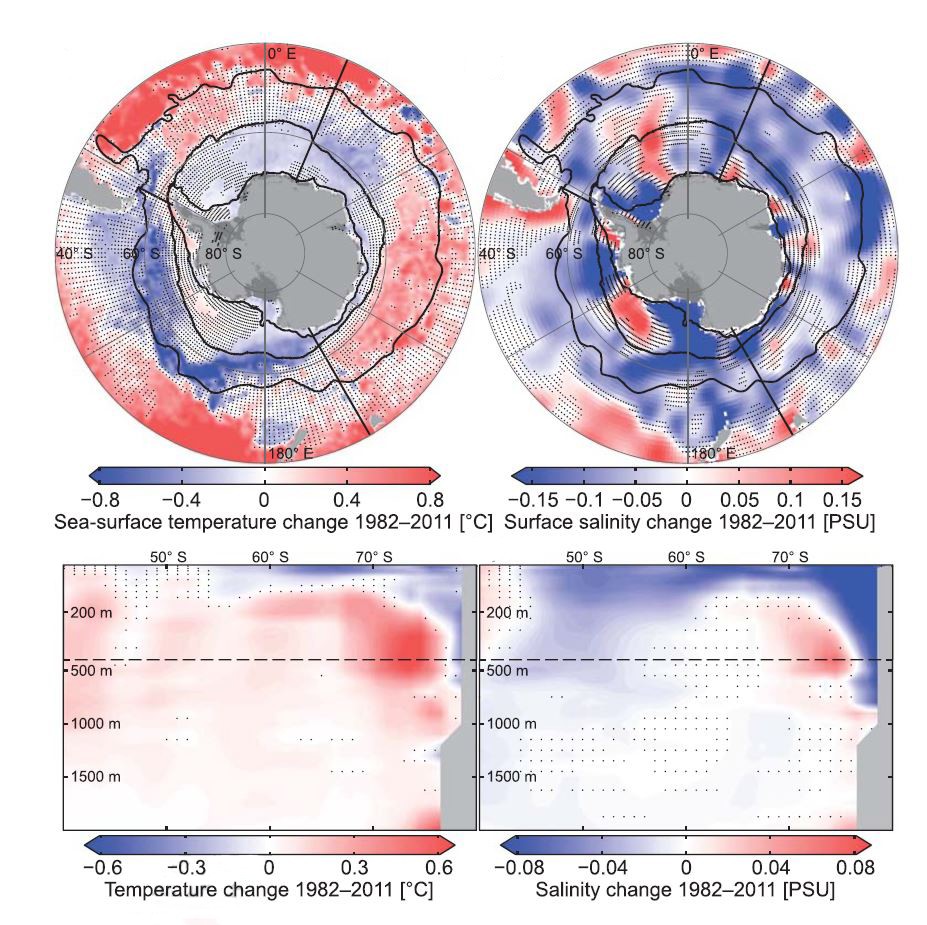For the last century or more, much of Earth’s land and ocean surfaces have been steadily warming, which we now understand is a product of climate change. But in parts of the Southern Ocean around Antarctica, sea surfaces cooled considerably since the early 1980s. And now, scientists think they know why.
Humans have left a measurable impact on the planet for thousands of years, but we really kicked things up a notch during the Industrial Revolution. Since the 1830s, carbon dioxide emissions have continuously risen, leading to a cascade of other environmental problems.
The most prominent is the steady warming of land and sea. Recent months, years and decades are consistently the hottest ever recorded, with global land temperatures in 2019 measured to be 1.1 °C (1.98 °F) above the 20th century average. Average ocean temperatures, meanwhile, have also recently hit their highest levels on record.
But not all parts of the sea are warming. Between 1982 and 2011, regions of the Southern Ocean were seen to cool down quite markedly. The effect was most pronounced in the Pacific sector, where surface water temperatures dropped by about 0.1 °C (0.18 °F) per decade. Other areas of the Southern Ocean, such as the Indian and Atlantic sectors, saw a weaker but still clear cooling effect.
Scientists haven’t been able to figure out exactly why this region is bucking the worldwide warming trend. But now, a team of researchers from ETH Zurich has come up with a model that explains it.
The study began when the scientists observed that during that same 30-year stretch, sea ice extent increased in the waters around Antarctica. Meanwhile, at the other end of the globe, the extent of sea ice continues to shrink.
A few years ago scientists figured out why this southern sea ice was spreading out so much. Stronger winds in the area were pushing more sea ice further away from the Antarctic mainland where it forms.
And that may be the cause, according to the new study. The researchers used detailed computer simulations of ocean mechanisms, and found that when they included sea ice melt they were able to produce cooler oceans. Other factors, such as stronger ocean circulation patterns or more freshwater running off Antarctic glaciers, didn’t account for the observations.

Haumann et al, AGU Adv 2020
The reason sea ice is a problem is that when it melts, it releases freshwater into the ocean. That reduces the salinity of the surface seawater, which tends to float on top of the denser saltier water. Like oil floating on water, these layers don’t mix as well as they normally would, leading to the warmer waters being trapped deeper down while the surface gets cooler.
But before people jump in to claim that this is evidence that climate change isn’t happening, the researchers say that this is basically the exception that proves the rule. Almost all other parts of the planet are warming up steadily, and one region not following the trend doesn’t discount that.
On top of that, there’s reason to believe that this is still an indirect symptom of climate change.
“The cooling of the Southern Ocean over three decades is really unusual, bearing in mind that otherwise all other parts of the planet, especially the land surface, have warmed up,” says Nicolas Gruber, lead researcher on the study. “We assume the strong winds pushing the sea ice in the Southern Ocean northward are potentially a side effect of climate change. Climate change is clearly man-made and cannot be disputed simply because one area of the ocean shows signs of cooling.”
Interestingly, it also now sounds like climate change is catching up to this rebellious region. The data only included up to 2011, and it seems like the situation has changed since then.
“We have observed a trend reversal since 2015. The sea ice around the Antarctic is now starting to recede at a rapid rate,” says Gruber. “And this is very much in line with the overall trend of continuing global warming.”
The research was published in the journal AGU Advances.
Source: ETH Zurich
Source of Article